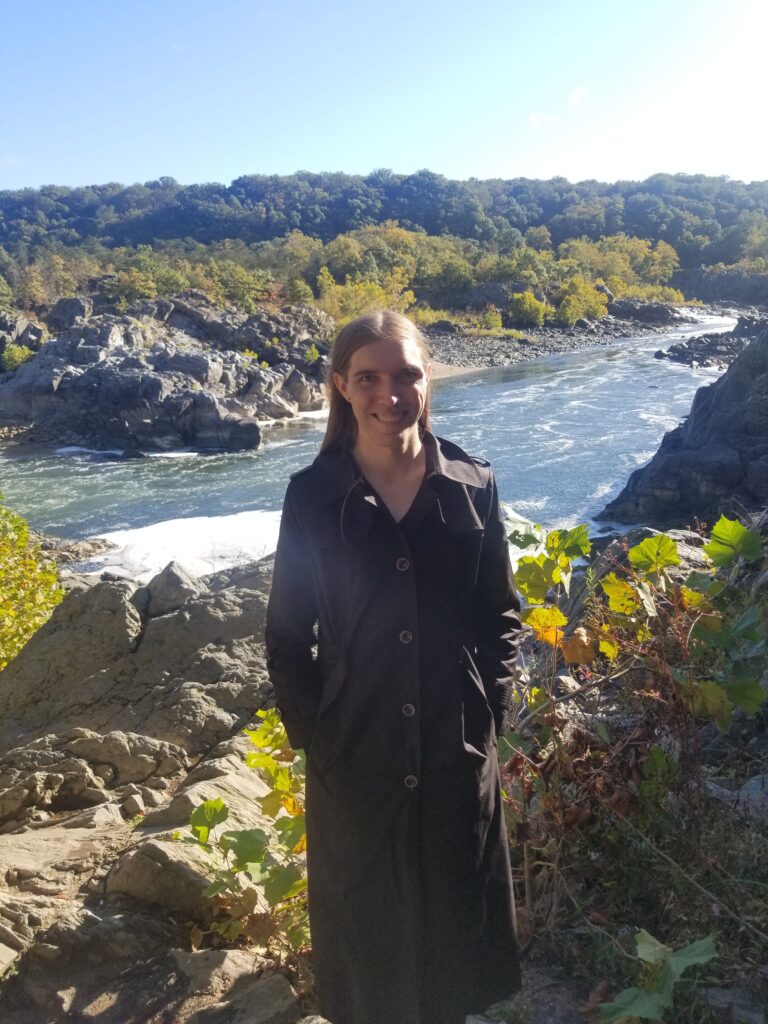Alexandria, VA – Coalition for Smarter Growth

I grew up in a military family in various places including Heidelberg, Germany and Salt Lake City, UT, and then I went to college in Albuquerque, NM. In 2016, I moved to Virginia to work as an attorney for the VA.
In Albuquerque, I took transit, but it was very limited, so I’d bike to school half the time. I would have been much happier being able to take a bus instead of worrying about the spikes from goat head plants puncturing my ties. The problem was that there were only 1 or 2 lines that run regularly, and the rest might only come 1 or 2 times a day.
When I first moved to Virginia, I had a car but got frustrated having to navigate the frequently terrible DC traffic. When I was looking to buy a house, I had to choose. I could either buy a place farther away from my job and own a car or save over $1000 a month and buy a place that was super convenient to my job, good restaurants, and other activities. I decided to sell my car and chose to buy a place that I knew was well connected with transit and where the Metro comes every 5 or 10 minutes.
I use the subway to get to work several times a week as well as to go places with my girlfriend like the Smithsonian or other places farther away. Usually it’s super convenient, reliable, and affordable.
But if I want to visit my brother in southern Maryland or go from suburb to suburb, it’s very inconvenient. It might only be 3 or 4 miles, but I would have to go all the way around, take a bus to the National Harbor, wait 45 minutes for a connection or take a subway all the way into the city and another one back out. Altogether, it would take me an hour and a half even though it’s only a 15-minute car drive for a 3 to 4-mile trip. I usually just give up and take Uber or Lyft.
It’s not just recreational trips between suburbs that are difficult. Right now, my girlfriend as well as several of my friends are looking for jobs, but they often are hesitant to consider jobs outside of the city because of how long or complicated the commute would be.
Transit should be much more supported and considered much more important than the personal automobile in this country because of the climate change problems that come with automobile use and the fact that many dense urban areas can’t accommodate more cars.
In fact, many people can’t or shouldn’t take cars. Cars require cognitive and physical abilities, but many people who are older or who have seizures, for example, are sometimes forced to drive because the other options can take 4 times longer.
Often, I get the sense that people don’t think transit, biking or walking are reasonable ways to get around, and I don’t entirely blame them. But jobs and restaurants aren’t just in the cities. Nowadays we need investments in suburban transit, so transit connects suburbs to suburbs in a way that is competitive to driving between them. We need to provide people who are unable or unwilling to drive, a way for them to get to work, to shop, visit family – to the places they need to be able to go – conveniently.
